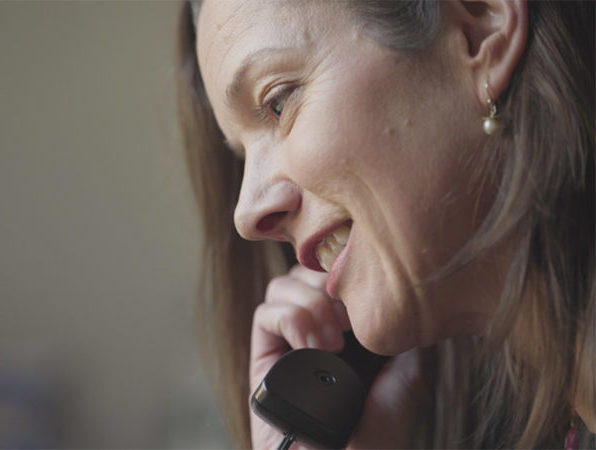Questions about stents?
If you have any questions or worries about stents, contact a nurse on our free Support Line.
A stent for a blocked bile duct is usually put in using a procedure called an ERCP (endoscopic retrograde cholangio-pancreatography). An ERCP uses a flexible tube with a camera on the end (an endoscope).
Before the ERCP, tell your medical team about any medicines that you are taking. Make sure you tell them if you take medicine to thin your blood, or for diabetes. Your medical team will tell you how to take these medicines before the ERCP.
You will be asked not to eat or drink for at least six hours before the ERCP, although you may be able to have small sips of water up to two hours before. This is to make sure that your stomach and duodenum are empty.
You will either have a sedative or a general anaesthetic before the stent is put in. A sedative will make you sleepy and relaxed but won’t send you to sleep. You will go to sleep if you have a general anaesthetic.
The endoscope is put into your mouth, passed down your throat and through the stomach to the small intestine. The camera shows the inside of your body on a screen. The stent is put inside the bile duct using a small wire. When the stent is in the right place the wire is removed.
The ERCP usually takes 30-40 minutes, but it can take longer.
You may have a blood test to check that the ERCP has not caused any problems such as inflammation of the pancreas. You will be told when you can drink and eat again. This is normally after four to six hours.
You may be able to go home on the same day or the next day. If you are going home on the same day, you will need someone to collect you from the hospital and stay with you overnight. This is because you can’t drive for 24 hours after having a sedative or a general anaesthetic.
You will be told who to contact if you have any problems after the ERCP.
Some people may not be able to have a stent put in by ERCP. Instead, the stent is passed through the tummy wall and liver and into the bile duct, using a thin needle. This is called percutaneous transhepatic biliary drainage (PTBD). Before the procedure you will have a sedative to make you sleepy. You will also have injections of local anaesthetic into your tummy area or lower chest. This will make it numb, so that you can’t feel anything. Some hospitals might use a general anaesthetic, which means you will be asleep.
A thin needle is guided into the bile duct using X-ray pictures on a computer screen. Dye is injected through the needle so that the blockage shows up on the screen. You might hear this part of the procedure called a percutaneous transhepatic cholangiogram (PTC). A wire is put into the needle and used to guide the stent into position. An X-ray will then be taken of your bile duct to make sure that the stent is in the right place.
Sometimes it’s not possible to put a stent in straight away. A drain may be used to help remove the build-up of bile before the stent is put in. The drain is a thin tube that is put into the bile duct through the skin. The bile drains through the tube into a bag outside your body.
It’s likely you will have another PTC within a couple of weeks of the drain being put in. This is to check how well the bile is draining. If it’s possible to put a stent in at this stage, the drain will be removed.
For a few people, the drain needs to be left in for the long term. This may be because it’s not possible to open the bile duct with the stent. Your medical team will talk to you about this if it affects you.
You may go home on the same day if you have had a stent put in with PTBD, but this will vary between hospitals. If an external drain has been left in, you may need to stay in hospital overnight. Speak to your medical team about what happens in your hospital.
Some hospitals may put a stent in using an endoscopic ultrasound (EUS). This uses an endoscope with a small ultrasound probe, which shows detailed pictures of the bile duct. The endoscope is put into your mouth and down your throat. The stent is put in the right position using the pictures from the ultrasound.
Putting the stent in using an EUS may reduce the risk of pancreatitis (inflammation of the pancreas), compared to an ERCP. Using an EUS is a new way of draining the bile duct and is only used at a few hospitals.
Any symptoms of jaundice usually improve in the first few days after the stent is put in. It may take around two to three weeks for your jaundice to go completely, and you may still feel tired and not have much appetite.
Bilirubin is a substance found in bile, and jaundice develops when there’s a build-up of bilirubin in the blood. The level of bilirubin in your blood will affect how soon you may be able to start treatment such as chemotherapy or radiotherapy. Blood tests called liver function tests check levels of bilirubin. After your stent is put in, the hospital may give you blood test forms or a letter to take to your GP for liver function tests.
If you have any questions or worries about stents, contact a nurse on our free Support Line.


Updated October 2023
Review date October 2026